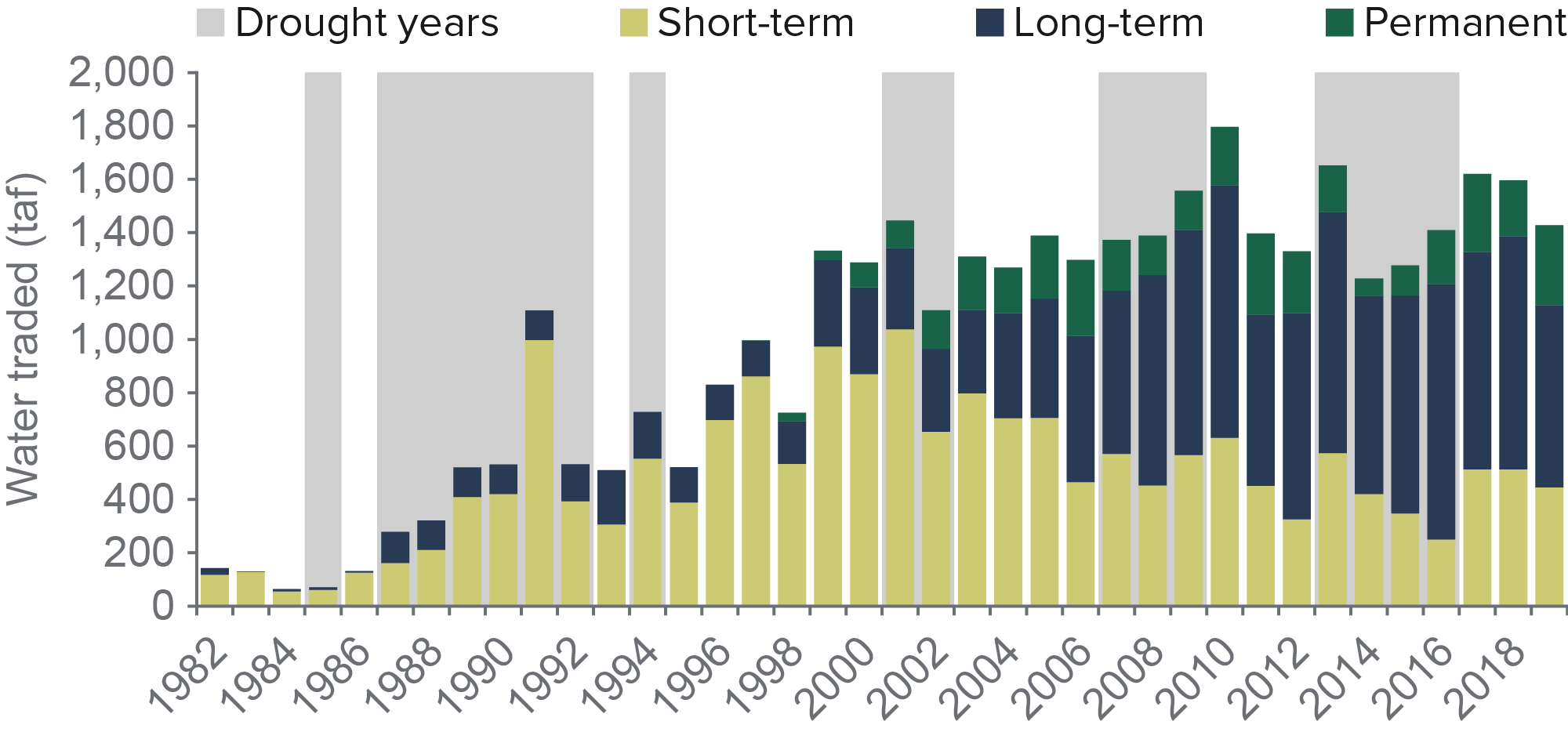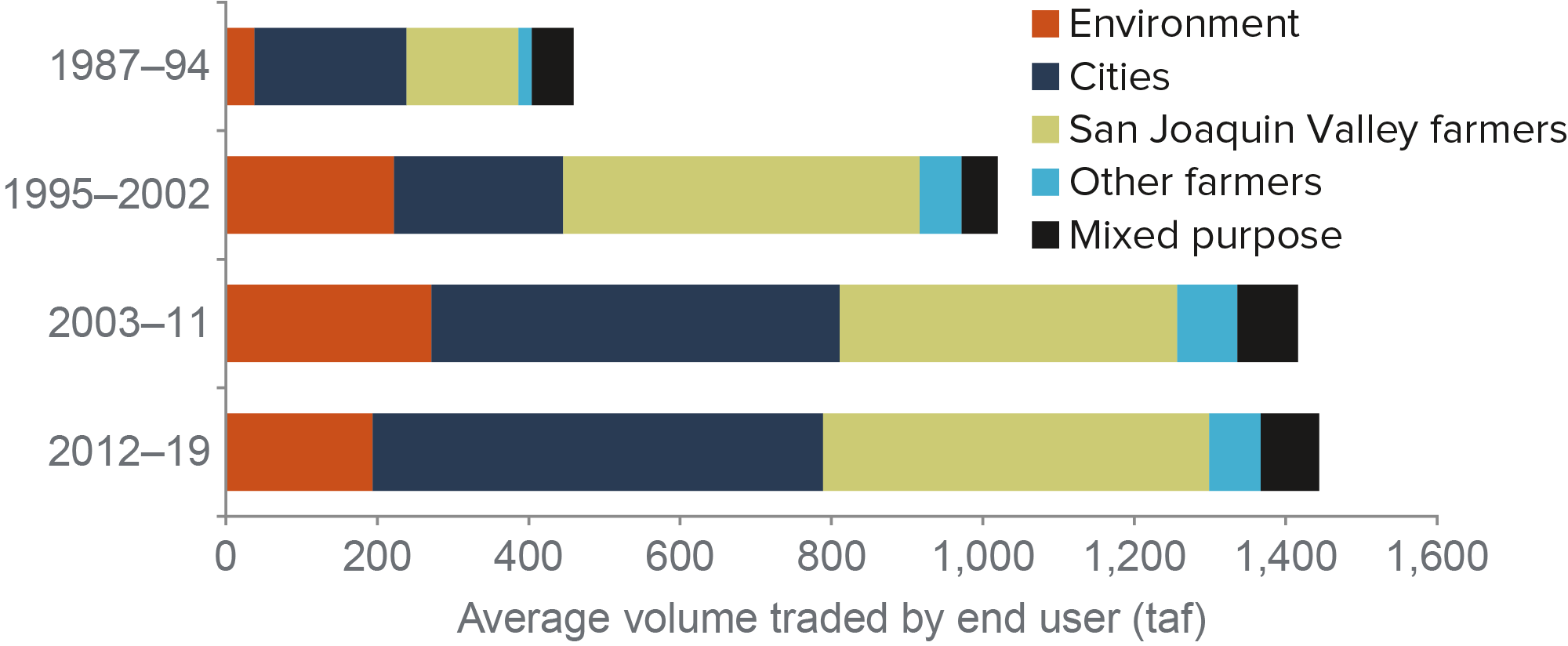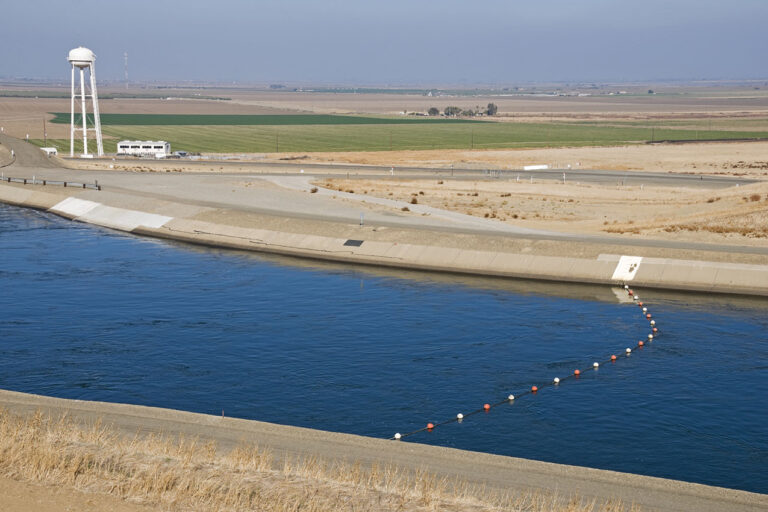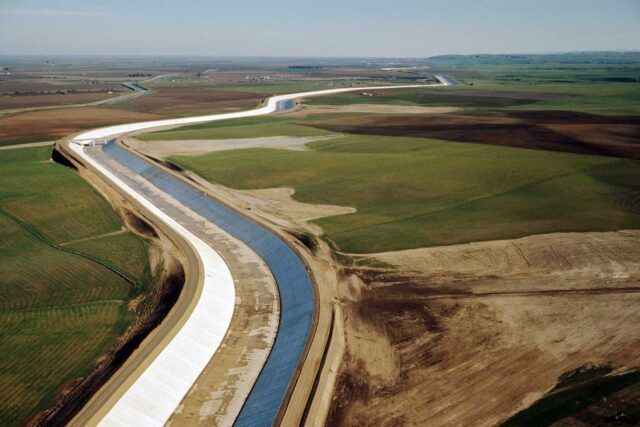Water marketing is an important tool for managing scarce supplies.
- In California’s water market, buyers and sellers trade water through short- and long-term leases as well as permanent sales of their water rights. Trading enhances flexibility in water management.
- Short-term transfers lessen the economic impact of shortages during droughts by shifting water to activities and places where the lack of water will be more costly. Long-term and permanent transfers accommodate geographic shifts in water demand as the economy changes and the population grows.
- Today, most trading involves surface water. Some groundwater trading occurs within specially managed basins; this is likely to expand as groundwater users in other basins implement the Sustainable Groundwater Management Act (SGMA).
Water sales grew significantly during the 1990s, but trading has stayed flat since then.
- Statewide, roughly 1.5 million acre-feet of water is traded annually—about 4% of all water used by cities and farms. Most trading occurs within the same county (46%) or region (26%).
- The market took off during the 1987–92 drought, spurred in part by a state-run Drought Water Bank. Volumes traded have been fairly flat since the early 2000s, though there has been a shift toward more long-term leasing and permanent sales.
California’s surface water trades have been fairly flat since the early 2000s

SOURCES & NOTES
SOURCE: Sencan and Hanak, California’s Water Market, By the Numbers: Update 2021 (PPIC, 2021).
NOTES: The figure shows surface water traded between entities that are not members of the same water district or wholesale agency. It excludes volumes committed under long-term lease and permanent-sale contracts that were not physically transferred because of hydrologic conditions or other factors (in 2019, roughly 800,000 acre-feet). Drought years are those classified as dry or critically dry for the Sacramento Valley. Although 2016 was a below-normal year, it is also shown as a drought year because it came on the heels of multiple dry years. Volumes are in thousands of acre-feet (taf).
Both cities and farms buy water, but most water sales come from the farm sector.
- Farms hold roughly four times as many water rights as cities, so they have more water available to sell.
- Growing cities in the San Joaquin Valley and Southern California are major buyers. Southern California cities now receive nearly 15% of their supplies from such trades.
- The market also supports productive farming areas that lack reliable supplies, and has helped keep San Joaquin Valley orchards alive during droughts.
Water sales can also support the environment.
- Environmental water purchases have supported wildlife refuges, increased flows for fish, and, until recently, reduced salt build-up in the Salton Sea.
- In all, over 6 million acre-feet were acquired for environmental purposes from 1982–2019, or 17% of total market flows.
- Funds have come from state and federal taxpayers and some water users, including water trusts. Recent funding declines have reduced volumes of environmental water purchases.
Cities, farms, and the environment acquire water through the market

SOURCES & NOTES
SOURCE: Sencan and Hanak, California’s Water Market, By the Numbers: Update 2021 (PPIC, 2021).
NOTES: The figure shows volumes purchased by different sectors. “Mixed purpose” denotes purchases by agencies with significant urban and agricultural uses, such as the Coachella Valley Water District and the San Luis Delta Mendota Water Authority.
The transfer approval process is complicated, but reforms could strengthen the market.
- Trading is subject to regulatory oversight because moving water from one place to another can affect other water users, including the environment. However, the transfer approval process is fragmented and inconsistent, with different rules for different types of water rights and agencies; it could benefit from streamlining.
- State and federal administrative reviews can be lengthy—often taking months, or even years. Uncertainty and delays could be reduced by improving information about water availability and how much can be traded without unduly harming the environment or other legal water users.
- Local agency processes are also key for well-functioning markets, and currently many counties and irrigation districts have rules that limit flexibility. In addition, establishing local groundwater markets will require strong basin accounting systems, caps on how much each water user may pump, and processes to avoid harm to other water users.
Topics
Drought Paying for Water Water Supply Water, Land & Air




